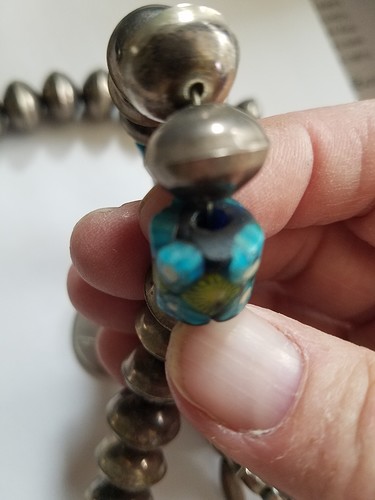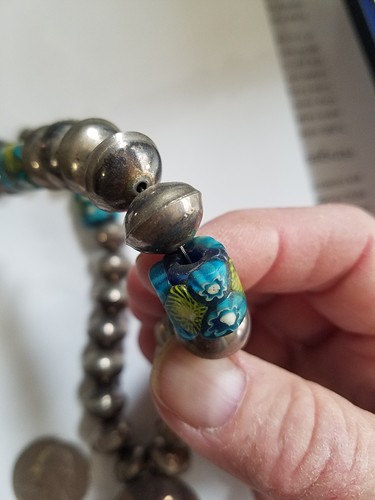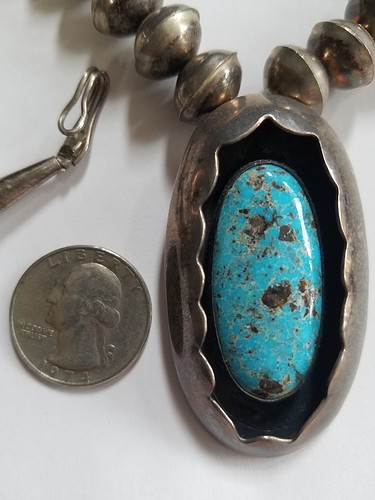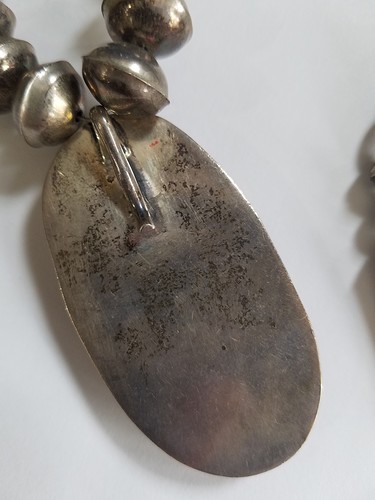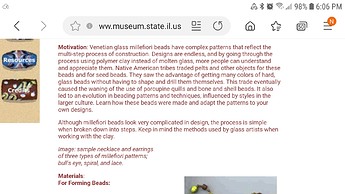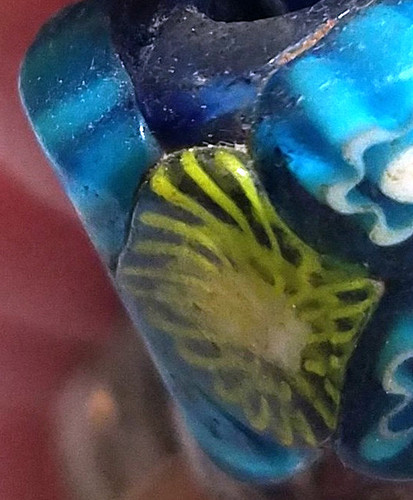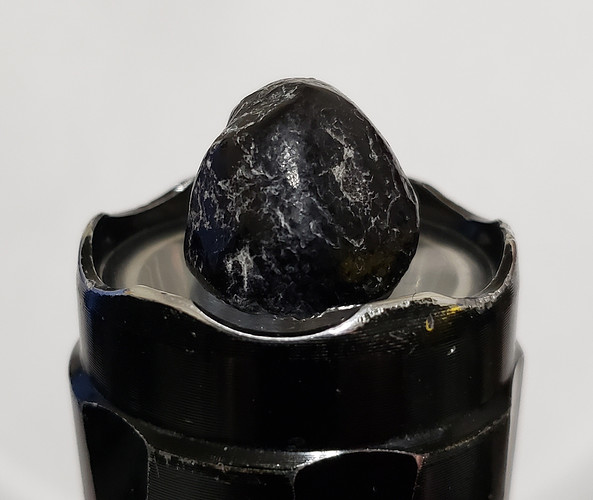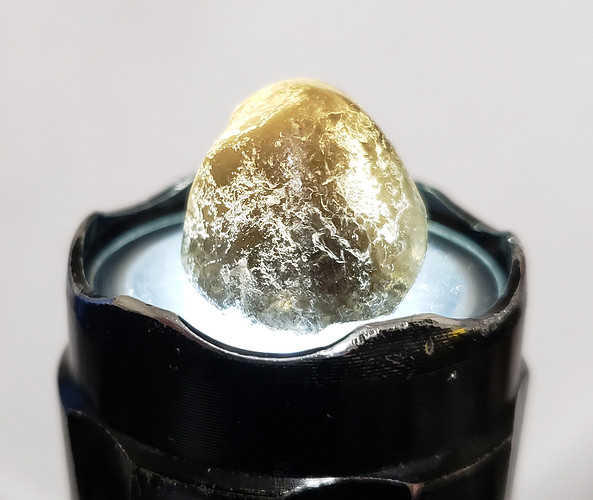When you’re a gardener in Wisconsin and you get snowed out in April, you go hunting for treasures! I came across this shadowbox necklace with chonky beads that have some interesting colorful beads incorporated in. I’m hoping someone out there can tell me if they might be original to the piece? They seem to be chunks applied to a host rock? It is strung on wire. What type of turquoise might the main stone be? Is the whole piece Chinese?
Thanks in advance to everyone for their input!
Those large beads are Millefiori which are Italian Venetian glass. This is an odd combination and i am guessing that this necklace might have been restrung at some point. The rest of the necklace appears to be authentic NA. I really like it, btw
Millefiori translated into English is Thousand Flowers
I agree if they feel like glass. if they are rubbery checkout Fimo online. Nice rondelle sterling pearls though, and the pendant is awesome!
i have seen beads like this made out of polymer clay too.
Thank you all for the awesome clue! The beads do not feel like glass, but more like clay. I did some searching and found a snippet on the Illinois State Museum website that said those type of beads were traded with Native Americans for pelts, etc. and that they can be made of clay when learning since clay is less expensive than glass. Who knew! You all are the best! This forum rocks!
Any idea what decade this piece might be from? 1960s???
@Greenrock the museum site is advising today’s readers/artisans that they can try using polymer clay to simulate the early Venetian glass process, not that old millefiori beads themselves sometimes were made of clay by beginners. Polymer clay of course dates far more recent than the fur trade era.
@chicfarmer The beads are not glass, then what are they?
As others mentioned above, they could be polymer clay (hence 20th c. and not of the time frame of Venetian glass trade beads). The museum site was just saying, you can play with clay and learn about millefiori that way.
some better closeups with natural lighting might help but… is polymer clay transparent?
looking closely at the yellow flower I see the blue from the flower behind it at about the 10 o’clock position and it turns to black around 11-12 matching the base it is fused to.
also the yellow strands have a 3 dimensional depth to them with the thinner strands on top crossing over lower strands underneath.
try for some strong backlighting photos like this Apache tear over LED flashlight.
Thanks for the close up.
Looks like glass to me.
I have a friend who makes this type of beads. Hers are relatively expensive, like $4.00-$7.00 each.
Your example shows that some of the individual glass pieces may not have fused completely together.
This can happen when glass with different melting temps and/or composition is used.
I have another friend who fuses glass together to make cabochons. Him and his wife will occasionally add slices of millefiori rods to the mix. Sometimes it works, sometimes it doesn’t.
I agree with fernwood - glass millefiori. I have to say, i kind of love them in this necklace. makes me wonder if the 4 glass accent beads were added as a custom detail by the maker of the silver, for a specific client. without them, it would be a nice, but rather plain, strand of bench beads with a shadowbox pendant. i would own this with pride, and wear it often.

